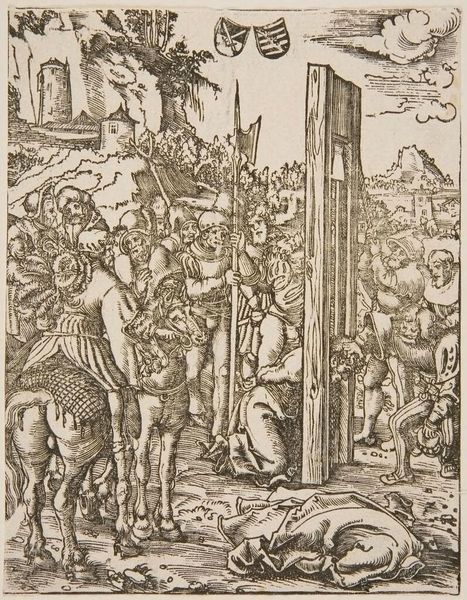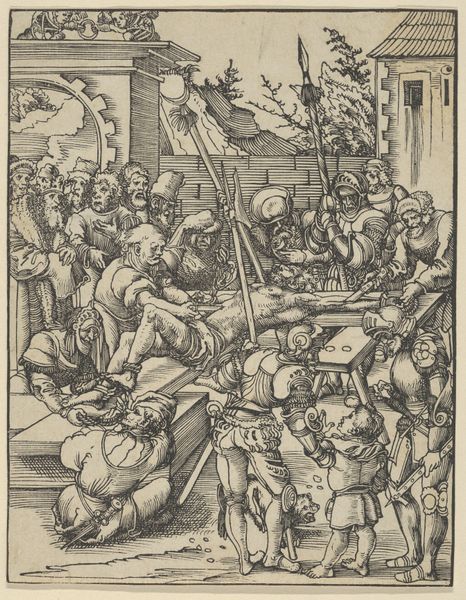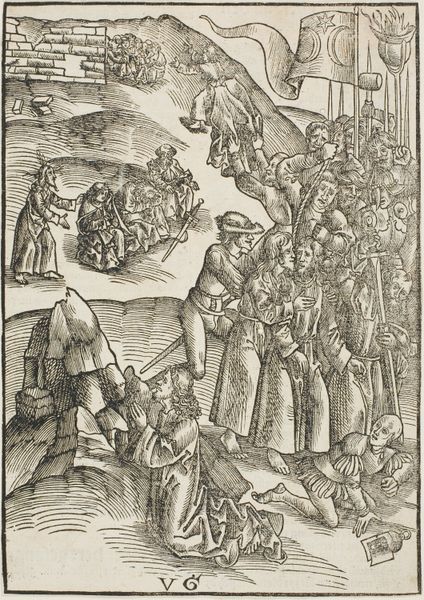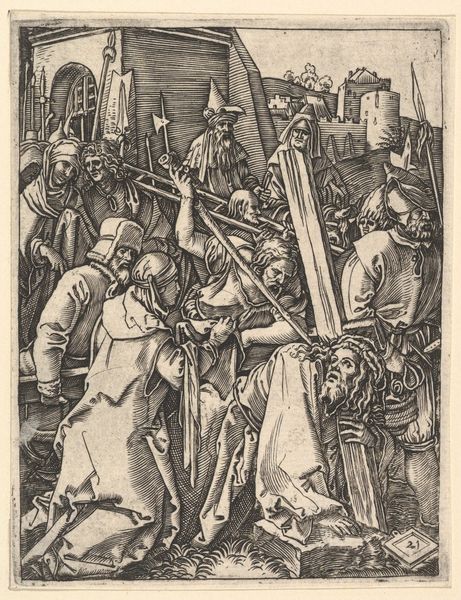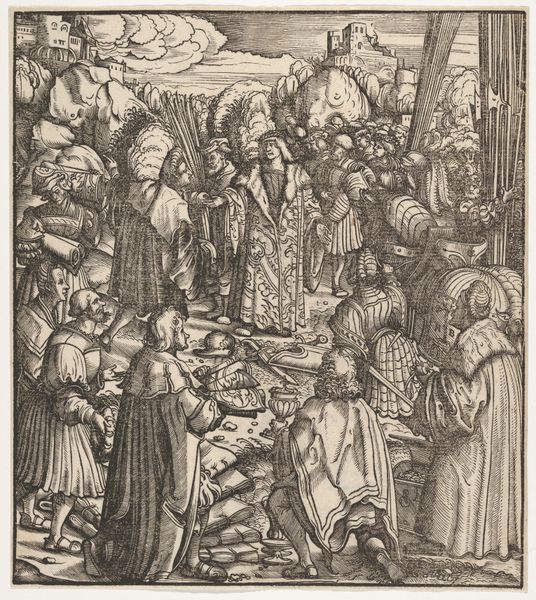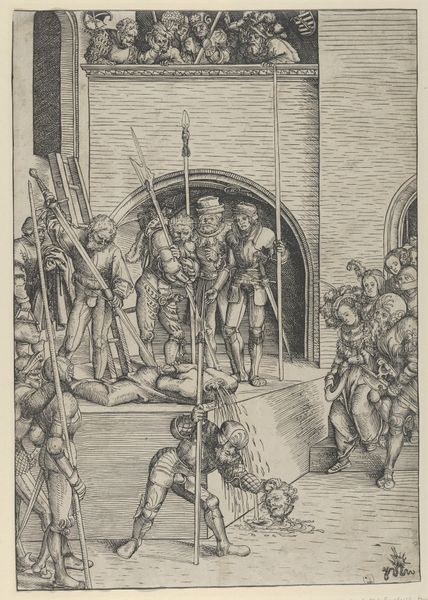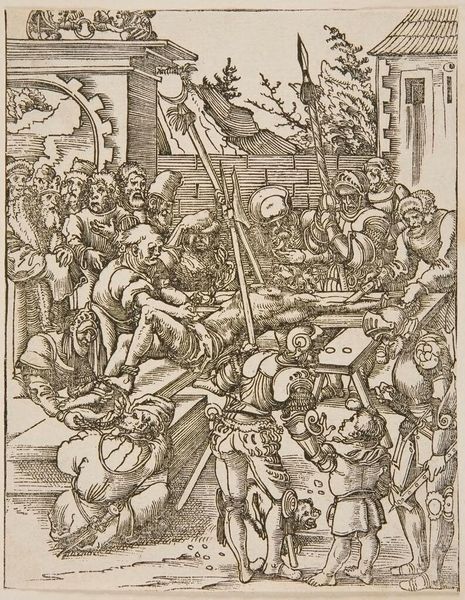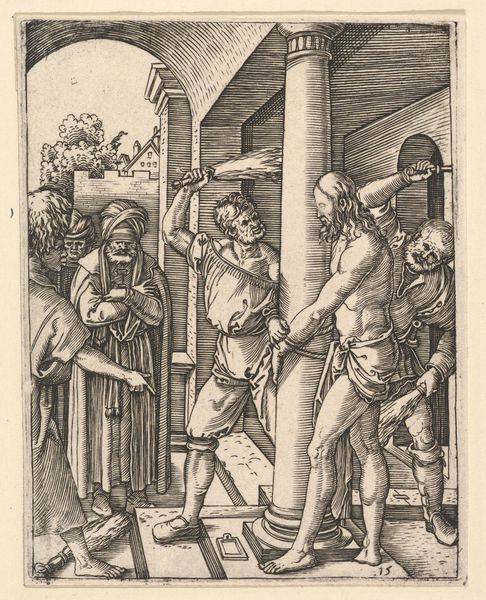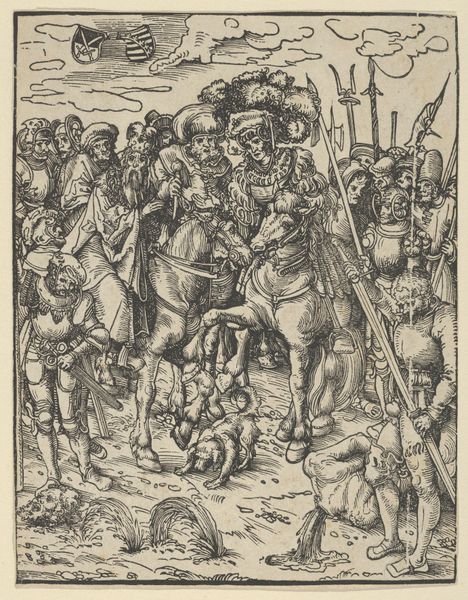
Saint Matthias, from The Martyrdom of the Apostles c. 1548
0:00
0:00
drawing, print, paper, woodcut
#
drawing
#
narrative-art
#
pen drawing
# print
#
paper
#
woodcut
#
history-painting
#
northern-renaissance
Dimensions: 161 × 127 mm (image/block/sheet)
Copyright: Public Domain
Curator: What a chilling scene! The composition feels so raw, immediate. Editor: Indeed. This woodcut, titled *Saint Matthias, from The Martyrdom of the Apostles,* dates back to around 1548 and is attributed to Lucas Cranach the Elder. Curator: The stark contrast of the black lines against the white paper is masterful, don't you think? The way the artist uses line weight to define form, particularly in the figure kneeling before the executioner's block. Editor: This print belongs to a time of intense religious and social upheaval, amidst the Reformation. Cranach, a close friend of Martin Luther, served as court painter in Wittenberg, deeply implicated in the era’s dramatic reshaping of religious doctrine and its visual representation. Curator: There's a theatrical quality to the staging. The figures are arranged almost as if performing for an audience. I'm particularly drawn to the detailed rendering of the horse. Editor: This image would have been part of a series designed for wider circulation, contributing to the dissemination of Reformation ideas. Printmaking played a crucial role, especially in empowering local authorities as the execution underscores their sovereignty. Curator: The contrast between the chaos in the foreground, with the brutal execution, and the serene, almost picturesque landscape in the background is striking. It's a sophisticated juxtaposition. Editor: The presence of those heraldic shields is interesting as well. Who did they signal and how would these symbols have reinforced hierarchies during the time it was made? It begs asking how did Cranach use visual propaganda to reinforce or question prevailing power structures? Curator: Studying these lines more closely, it feels like Cranach meticulously designed every mark, carefully planned to convey light, shadow, and emotion. The effect is undeniably powerful. Editor: I concur. Cranach’s narrative resonates powerfully. Seeing such works is vital in understanding how art operates in society. Curator: Absolutely. It provokes so many conversations just considering form alone. Editor: Indeed. Thanks for this enriching formal consideration, let us keep engaging in visual analysis that challenges us to keep interrogating history.
Comments
No comments
Be the first to comment and join the conversation on the ultimate creative platform.
